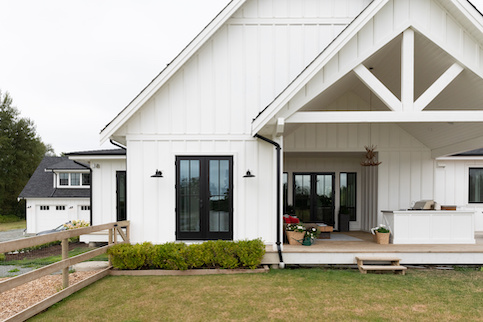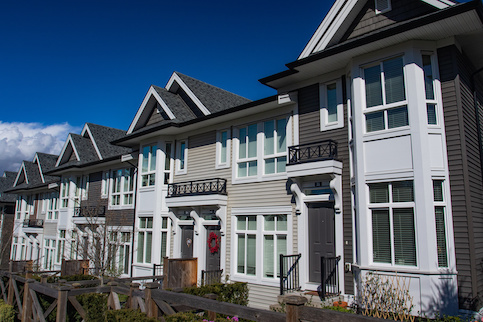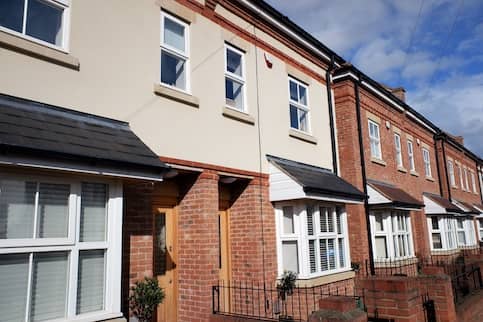Worried about a hefty tax bill from selling an investment property? A 1031 exchange lets you sell one property and buy another without having to immediately pay capital gains tax.
However, strict IRS rules apply, and while a 1031 exchange does allow you to avoid paying capital gains tax when you sell and buy investment properties, it doesn’t eliminate the tax completely. Eventually, you’ll need to pay it.
It’s natural to have questions: What is a 1031 exchange? How does a 1031 exchange work? How can it help you grow your investment portfolio? And what are the rules for 1031 exchanges? For answers and more helpful information, read on.
Key Takeaways:
- A 1031 exchange allows you to defer capital gains taxes by reinvesting the proceeds from the sale of an investment property into the purchase of another investment property.
- Types of 1031 exchanges include delayed, reverse, improvement, and simultaneous exchanges.
- You must follow specific rules, such as meeting property requirements, adhering to time restrictions and avoiding prohibited types of exchanges.
What Is A 1031 Exchange?
A 1031 exchange allows you to defer payment of capital gains taxes when you sell an investment property and use the proceeds from the sale to buy another investment property.
“A 1031 exchange, named after Section 1031 of the Internal Revenue Code, allows real estate investors to defer capital gains taxes by reinvesting the proceeds from the sale of a property into a similar property of equal or greater value,” says Josh Katz, a Certified Public Accountant and Founder of Universal Tax Professionals in Chagrin Falls, Ohio. “Essentially, it’s a great way to defer taxes while continuing to invest in real estate.”
What’s Your Goal?
Buy A Home
Discover mortgage options that fit your unique financial needs.

Refinance
Refinance your mortgage to have more money for what matters.
Tap Into Equity
Use your home’s equity and unlock cash to achieve your goals.
Why Use A 1031 Exchange In Real Estate?
Real estate investors, real estate agents and title companies turn to 1031 exchanges because of the tax benefits they offer.
When owners sell real estate that has increased in value since they bought it, they must pay capital gains tax on their profit. The amount you owe depends on your income, tax filing status and how long you owned the property. A 1031 exchange lets owners defer paying this tax, which helps boost their bottom lines.
“Good candidates for a 1031 exchange include those looking to update properties, diversify investments or holdings, or consolidate assets without incurring immediate tax liabilities,” says Andrew Latham, a Certified Financial Planner and Content Director for SuperMoney in Rolesville, North Carolina. “For instance, say you sell a property for $500,000 that was originally purchased for $300,000, which means the capital gain is $200,000. If so, you would typically owe $40,000 in capital gains taxes, assuming a 20% tax rate. But by using a 1031 exchange, you can reinvest the entire $500,000 into a separate property, potentially generating higher returns without the immediate tax hit.”
After the sale, you would report the 1031 exchange by filing Form 8824 with your income tax return. The deferred tax must be paid when you sell your investment property without reinvesting in another. If you’ve used multiple 1031 exchanges, you’d have to pay all the accumulated capital gains tax.
Ready To Become A Homeowner?
Get matched with a lender that can help you find the right mortgage.
Types Of 1031 Exchanges
There are several types of 1031 exchanges:
- Simultaneous exchange. In a simultaneous exchange, the property you sell and the one that you buy close at the same time. “This simplifies the process by avoiding interim steps,” says Dennis Shirshikov, an Adjunct Professor of Economics at City University of New York’s Queens College in New York City. “On the downside, it’s difficult to coordinate perfectly timed transactions.”
- Delayed exchange. Delayed exchanges are the most common type of 1031 exchange. To qualify for one of these, you must identify the new property that you want to buy within 45 days of selling your original property. You then must close on the new property within 180 days. “This method offers more time to find a suitable replacement but has strict timelines,” says Latham.
- Reverse exchange. In a reverse exchange, you’ll choose your new real estate investment before selling your current one. You’ll usually have 45 days to identify the property you want to exchange and 180 days to complete this transaction. “The advantage here is that you can secure a desired replacement property without a rushed sale,” Shirshikov says. “However, it requires substantial capital and can be complex to manage.”
- Improvement exchange. In an improvement exchange – also known as a construction exchange – you trade your property for vacant land or a new property that requires renovations, which must be identified within 45 days. You then use the proceeds from selling your original property to build a like-kind property on the vacant land. Construction needs to be completed by the end of the 180 days. “An improvement exchange enables customization to meet your specific needs, although it’s complex and requires precise management,” Latham says.
Take The First Step To Buying A Home
Find a lender that will work with your unique financial situation.
Rules For 1031 Exchanges
You’ll need to follow specific IRS rules with a 1031 exchange, most of them revolving around the type of real estate involved and the number of days you have in which to complete the exchange.
Property Requirements
The IRS states that you can only complete a 1031 exchange involving like-kind properties, which it defines as being of the same nature or character, even if the properties differ in their overall quality. This means you must swap one form of investment or business real estate with another.
This provides plenty of flexibility. For example, you can swap farmland for an apartment building, rental homes for an office building, or an office building for an industrial property.
“Most investment real estate qualifies for 1031 exchange treatment, including rental homes, raw land and commercial buildings,” says Andrew Lokenauth, a Tampa, Florida-based personal finance and investing expert and Founder of TheFinanceNewsletter.com. “However, you cannot do a 1031 exchange on a primary residence you want to move into.”
Another key rule: If you’re selling a property in the United States, you can only close a 1031 exchange by buying another piece of domestic real estate. If you’re selling a property outside the United States, you can only reinvest your proceeds into another foreign property.
“There are other rules that apply, too,” Lokenauth says. “The replacement property must be of equal or greater value than the relinquished property. Both properties must be similar in function in nature and used for investment or business purposes. All sale proceeds must be held in a qualified intermediary escrow account, as well.”
Time Requirements
According to the IRS, you must identify the new property you want to buy within 45 days of closing on your original property. You must then close on this new property within 180 days.
“The 45-day rule is important in that it requires identification of potential replacement properties within about six weeks of selling your original property,” Katz says. “And it’s crucial to be equally aware of the 180-day rule, which mandates the acquisition of the new property within around six months.”
Prohibited Exchanges
You cannot use a 1031 exchange to defer taxes when buying or selling the following:
- Partnership interests. These refer to the ownership in a partnership by a limited partner or general partner, including all associated benefits and obligations under this agreement.
- Stocks, bonds or notes. Stocks are company shares that grant a share of ownership and the company’s profits. Bonds are debt instruments sold by companies, the government or other institutions to raise funds by borrowing money from investors and paying it back with interest. Treasury notes, or T-notes, are U.S. government-issued securities with terms of two to 10 years.
- Trust certificates. These are issued by a trustee of a designated trust property and represent a portion of ownership in that property. They outline the owner’s rights to income and profits from the trust, as well as how the certificate can be transferred.
- Other securities or debts. This includes a variety of tradeable financial assets or investments, such as debentures, owed monies, limited partnership interests and investment contracts.
How To Do A 1031 Exchange
Eager to pursue a 1031 exchange? Here are the steps involved:
1. Choose The Properties You’re Selling And Buying
“This involves identifying the relinquished property, meaning the one you are selling, and the replacement property – the one you are buying,” says Katz.
2. Pick A Qualified Intermediary
The intermediary holds the sale proceeds and ensures compliance with IRS regulations. This should be a licensed, bonded and experienced professional.
“The intermediary must be a neutral third party with experience in handling 1031 exchanges,” Katz says.
3. Determine The Dollar Amount To Go Toward The New Property
Next, you’ll need to decide how much of the proceeds from the sold property will go toward purchasing the new property.
Latham suggests reinvesting the entire amount from the sale, including the net proceeds and any outstanding mortgage balance, into the new property. “To maximize tax deferral benefits, ensure that the debt level on the new property is at least equal to or higher than that on the relinquished property,” he says. “This will help you get a full tax deferral and avoid any taxable boot.”
4. File Form 8824
The final step is filing IRS Form 8824 with your tax return. “This form reports the 1031 exchange to the IRS,” Katz says. “Proper filing ensures that the exchange is recognized and the tax deferral is granted.”
FAQ
Here are answers to common questions about 1031 exchanges.
The Bottom Line
A 1031 exchange is valuable for real estate investors looking to defer paying capital gains taxes on profitable sales. However, to benefit from this program, investors must understand its workings, meet strict deadlines, and follow IRS guidelines.
More From Quicken Loans:
- How To Invest In Real Estate: A Beginner’s Guide
- Is Real Estate A Good Investment? What You Should Know
- Types Of Real Estate Investments: A Complete Guide
- How To Invest In Income-Producing Real Estate
- Putting A Down Payment On Investment Property: What To Know
- Real Estate Investment Strategies For Retirement
Dan Rafter contributed to the reporting of this article.

Erik J. Martin
Erik J. Martin is a graduate of Loyola University Chicago and a freelance writer whose articles have been featured in AARP: The Magazine, Reader's Digest, The Costco Connection, The Chicago Tribune, Los Angeles Times and other publications. He often writes on topics related to real estate, personal finance, technology, health care, insurance and entertainment. He also publishes several blogs, including Martinspiration.com and Cineversegroup.com, and hosts the Cineversary podcast.












